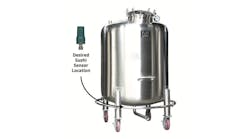Figure 1. Data from wireless devices coupled with industry expertise can help guide steps a plant should take. Source: Emerson.
Figure 2. BP already has rolled out the system to all its refineries and now is installing it at other facilities. Source: BP.
Pervasive sensing also is attracting interest from customers that transport products. One barge owner on the Mississippi requires 24-hour remote monitoring to verify accurate custody transfer of oil. "The customer wanted to know if we could continuously monitor level transmitters for them, something which is critical to ensure proper business practices are taking place. We see this more and more on moving tanks, such as on rail or trucks," says Milavickas.One major hurdle with pervasive sensing is making sure that customers can reap the benefits of all the new data to which they have access. "This is one of the basic challenges for us," admits Milavickas. "We have the basic software and, at the moment, we are working on making it easier to get to the information. In the visionary case, we are looking at web-based solutions, i.e., you could download an app to get the interface you want. In October we launched a PC Navigator, which is essentially hardware with software enabled on it that allows the customer to manage their entire wireless system. This is our first tool for marrying wireless infrastructure together. We will continue to develop this product and have a more definite perspective on it by the end of 2014."Customers' internal structure poses another hurdle. "They definitely see the value but what they don't have is a 'wireless manager' — someone who sits between IT [information technology] and process control. Both sides have different priorities and neither fully understands the wireless role. So customers do have to change their internal structures and functions. However, we are seeing more and more recognition from customers who realize that they need these internal practices to really recognize the value of pervasive sensing," notes Milavickas.
OTHER ADVOCATESEndress+Hauser also is promoting the value of widescale wireless sensing. "Using sensors with wireless as an enabling technology allows you to collect and share data — and consequently process information — into the higher level systems. Wireless in this context offers the possibility to access in a cost-effective way information on the plant that has previously been restricted due to location or cost," says John Salusbury, director corporate marketing, Endress+Hauser Consult, Reinach, Switzerland.A recent project at
PZ Cussons, Manchester, U.K., illustrates the point. Together with alliance partner
Rockwell Automation, Endress+Hauser installed level, flow, temperature and pressure sensors on a new high-speed liquids manufacturing facility. The improved process and diagnostic data now available have enabled PZ Cussons to increase production, meet tougher quality targets, reduce downtime and enhance the accuracy of its validation procedures. Shorter batch times also have led to energy savings and reduced time to market for products. As a result, the company will continue manufacturing its homecare, personal care, beauty and nutrition brands in the U.K. instead of transferring production abroad, as it had been considering.Meanwhile,
Yokogawa Electric, Tokyo, Japan, is promoting its Wireless Anywhere concept, which advocates plantwide use of field wireless systems, particularly by the chemicals and petrochemicals industries.In line with that initiative, the company announced in February that it has developed a multi-protocol wireless adaptor to enable wired field instruments or analytical sensors to function as ISA100 wireless devices. The adaptor can be mounted on devices commonly used in plants, including those for monitoring temperature, pressure, liquid level or vibration or detecting gas, and is compatible with instruments and sensors from both Yokogawa and other vendors. The first two models are intended for wired HART and RS485 Modbus communications, with later releases aimed at other standards including Foundation Fieldbus and Profibus.
A REFINER'S INITIATIVEBP has announced the successful deployment of the Permasense integrity monitoring system at all company-operated refineries as part of its refining and logistics technology program (
Figure 2). The system now is being piloted at BP upstream and alternative energy facilities.Developed by monitoring systems specialist Permasense, Horsham, U.K., in partnership with Imperial College London and BP, the system reportedly offers corrosion engineers, inspectors, planners and plant managers previously unavailable insights into the condition and capability of critical oil and gas assets. Sensors can be permanently attached to pipes operating in extreme temperatures and in difficult-to-access locations. The sensors then are linked via a wireless network to provide data directly to the user for single viewings or integration into other plant monitoring systems. The early warning system enables BP teams to monitor the effectiveness of corrosion mitigation strategies and intervene, if necessary, to prevent or minimize leaks and any associated environmental impacts caused by corrosion. Unlike conventional corrosion monitoring, which can be expensive to perform and doesn't always identify unexpected changes in wall thickness at an early stage, the new system provides more consistent and robust data at no incremental cost after the initial installation.
THE SECURITY CHALLENGEWhile companies certainly are benefiting from all the extra data from wireless devices, they do — or should — worry about security. So, vendors are working on an ongoing basis to bolster security. For instance, Emerson's Milavickas notes, "Ensuring security of data inputs is a constant challenge and we continually monitor and upgrade — doing everything we deem possible for the highest levels of security." Security concerns likely ratcheted up recently because of a talk in January at Digital Bond's 7th annual SCADA Security Scientific Symposium in Miami Beach, Fla. Alexander Bolshev of
ERPScan, St. Petersburg, Russia, gave a presentation in which he demonstrated how HART has the same insecure-by-design issues as other industrial-control-system protocols. He showed how access to the 4–20-mA control loop could be used to attack the entire plant, including applications and protocols that appear to be unrelated to HART."These findings are not new, but they are significant. None of the fieldbus/communications protocols were designed with security in mind and some are 20-odd- years old now," says Eric Byres, CTO and VP engineering of
Tofino Security, Lantzville, B.C."Protocols such as HART and HART over IP are losing their 'security by obscurity' protection and are easy to hack — and once someone takes aim at them, the devices all are badly flawed.Once we were secure because we were obscure. Now we aren't and as a result we are a lot more vulnerable," he cautions.He urges vendors to ensure their products are ISA 100 certified. "Since Shamoon in the Middle East, the market there is demanding that vendors build the highest levels of security into their devices. These demands will come to North American and Europe, too."


